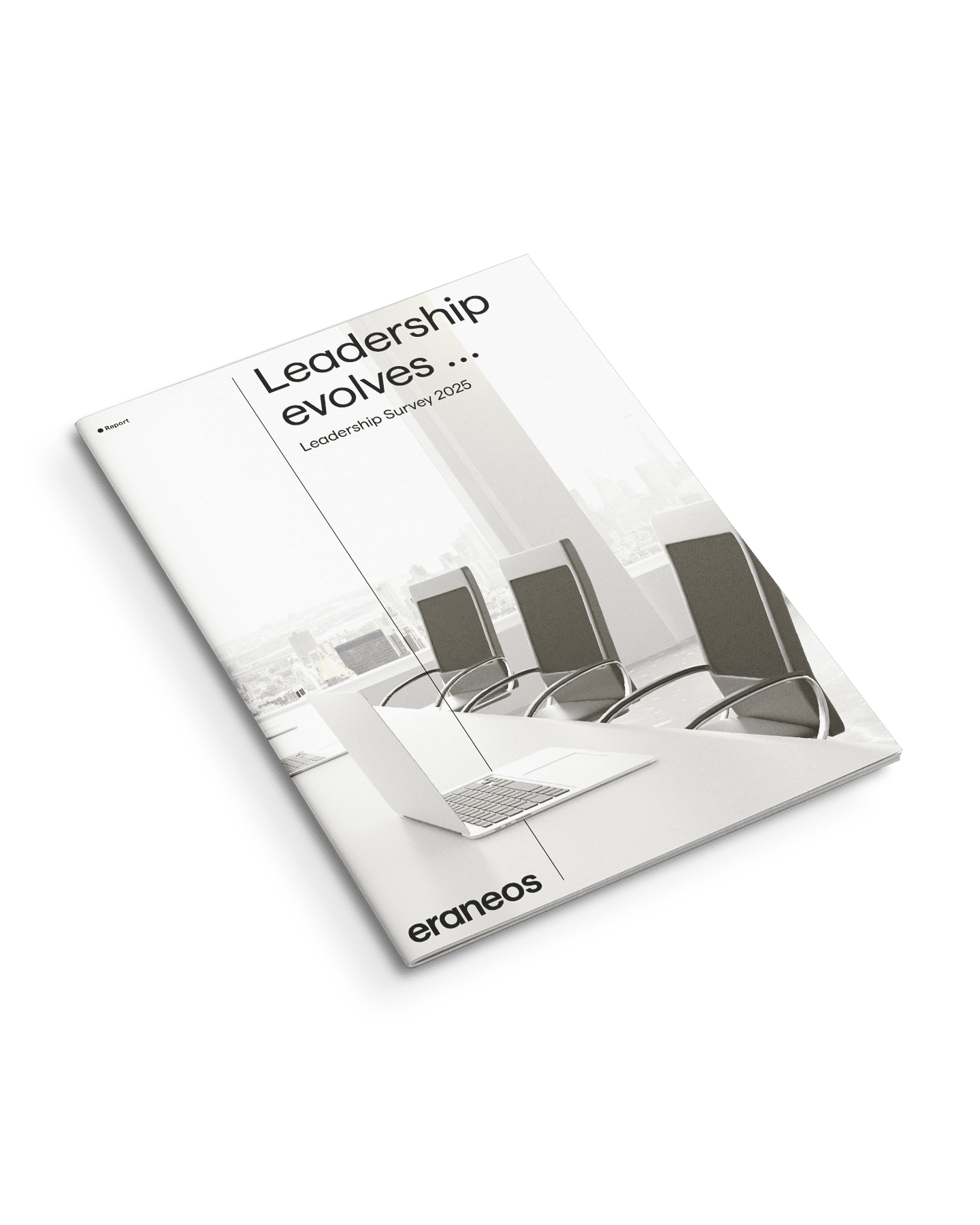About this series: In 2024–2025, Eraneos conducted research into the behaviors of effective leaders. Based on the insights gathered, we created a five-part article series exploring what today’s leaders need to truly make an impact.
In this first part, we focus on one of the most underestimated leadership skills: actively removing obstacles. Our research revealed one standout conclusion: leaders must get better at solving impediments. If we want organizations to truly perform, leaders need to take ownership of the barriers that stand in the way of progress.
From our research
Our data shows that most leaders are aware of performance obstacles: 55% of respondents slightly agree and 14% strongly agree that leaders pay attention to what gets in the way of progress. But there’s a problem, nearly 30% disagree, saying leadership doesn’t adequately address or resolve these issues.
Awareness isn’t the same as action. People sense it when obstacles are ignored or forgotten. Leaders must not only act, but also show that they’re acting, sharing updates, asking for feedback, and following through. That’s how trust grows. That’s how performance improves.
The system is the problem
As Deming said decades ago: “People are already doing their best. The problem is with the system. Only leaders can change the system.”
And systems are full of friction. Delays, handovers, approval waits, overloaded teams. These aren’t personal failings; they’re signs the system needs your attention. If your people are doing their best, and progress still feels slow or erratic, chances are high that impediments are to blame.
What are impediments?
Impediments are anything that slows down or stops the flow of work. There are the obvious ones, like waiting for a customer reply or missing a key resource, and the subtle ones, like conflicting priorities or never-ending meetings. When work stops, leaders often jump in. But when work just slows down, we normalize it.
That’s the danger. We start accepting friction as part of doing business. Leaders let these slow-downs linger, quietly eroding energy and results.
Two kinds of impediments
Look closer, and you’ll see that impediments come in two forms:
- Operational impediments: practical blockages in everyday work
- Managerial (or policy-driven) impediments: deeper system flaws, often caused by leadership decisions
Leaders usually focus on the first kind: they are more visible, easier to fix, and solving them feels good. But real improvement happens when you tackle the second kind. That takes time, reflection, and uncomfortable questions. Still, it’s where lasting change begins.
“People are already doing their best. The problem is with the system. Only leaders can change the system.”
Why impediments matter
Every leader wants results. You have goals, strategies, and customers to serve. But those results depend on something else: flow.
Flow is what happens when good ideas turn into real outcomes, without delays, confusion, or friction. When flow is blocked, nothing moves. When flow is restored, value is created. If you care about performance, you must care about impediments.
What happens in practice
In the real world, we see three common responses to impediments:
- The ideal: We spot the problem, fix it, and move on.
- More common: We notice it… and do nothing.
- Even worse: We try to fix it… but the solution doesn’t stick.
The reasons vary. Maybe we’re distracted. Maybe the problem feels unsolvable. Maybe the solution was never implemented. Or maybe we fixed the wrong problem. Whatever the reason, the result is the same: frustration builds and performance stalls.
So why don’t we act?
Sometimes, it’s a simple lack of time or energy. Other times, the problem feels outside our control, assigned to another team, another department, or even an external partner.
As a leader, your job is to challenge those beliefs. “Most ‘unsolvable’ problems can be reframed, redefined, or at least improved.”And if the issue really is beyond your control, then escalate it; don’t abandon it.
There’s also a more subtle trap: solving the wrong thing. For instance, offering a managerial solution to an operational problem or vice versa. This creates a mismatch that solves nothing. Or we try to do too much at once. The change is too big, too complex, too slow. In that case, scale it down. Solve part of the problem now, and the rest later.
Three rules for leaders facing impediments:
- Every situation can be improved
- Always act to restore movement
- By the next meeting, a step must be taken or the problem must be solved.
What Eraneos sees in the field
At Eraneos, we help organizations become high-performing by identifying and removing what blocks flow. In our work, we focus on three main categories of impediments:
- Time traps
These are delays created by internal policies, rules or decisions that hold up work without solving real problems. Often, the team causing the delay doesn’t even realize the downstream effect. Because they’re policy-based, leaders can change them. - Capacity constraints
When teams simply don’t have enough time, people, or knowledge to get the work done, flow suffers. This is a more visible kind of impediment, but it often masks deeper structural issues. - Unplanned urgent work (side-steering)
This is the surprise work that bypasses planning and disrupts everything. Ironically, it’s often introduced by leaders themselves. It always sounds important, but it comes at a cost—slowed progress, missed goals, and burned-out teams.
Take action
If you’re serious about performance, solving impediments is one of the most powerful things you can do as a leader. So where do you begin?
- Understand how work flows in your organization, from idea to delivery.
- Look for time traps, constraints, and side-steering
- Match the right solution to the right problem
- Don’t let “good enough” get in the way of “can be better”
Because flow doesn’t fix itself. Systems don’t improve on their own. And people doing their best will always need leaders who take responsibility for what gets in their way.
Curious about how to eliminate barriers and boost performance in your organization? Dive deeper into our full research and learn how leaders can make lasting change.

Leadership survey 2025: Leadership evolves …
Discover the latest leadership trends. Learn how modern leaders navigate technology, change, and people-centered transformation. Request the report now!





